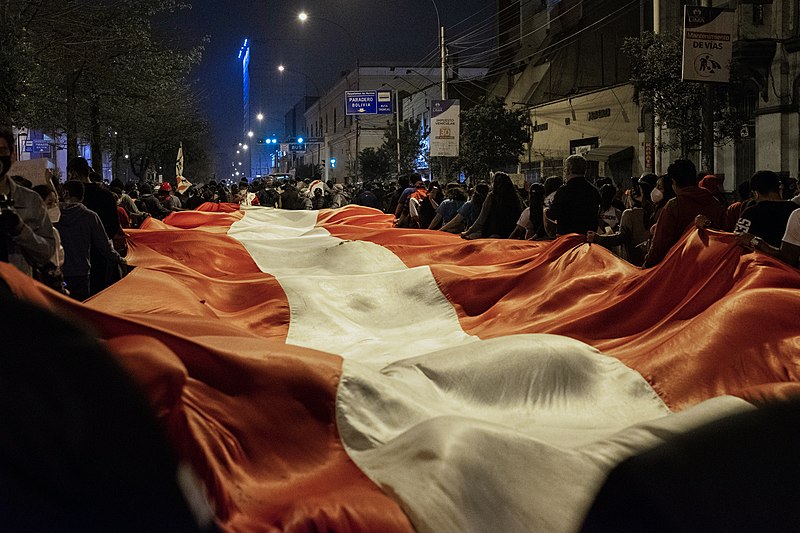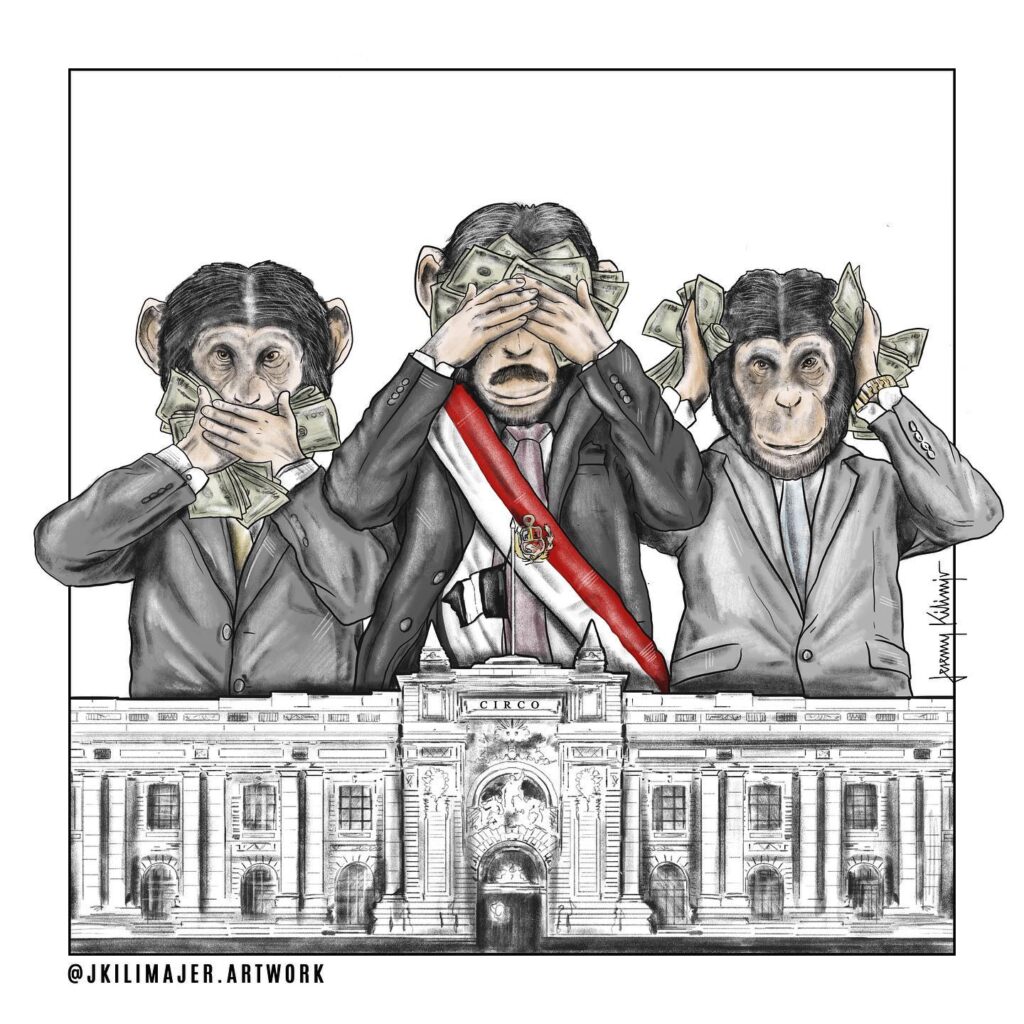
Guest post by Enrique Mendizabal
Change is not linear. Policy change is not the end of the story. The relationship between evidence and policy is not linear. Politics matters. Research matters very little. Individuals and individual organisations can do very little.
At On Think Tanks, we’ve been making these points for over a decade. Events in Peru can now help us illustrate them and remind us that we mustn’t simply focus on change. We must pay more attention to how we achieve it – or change can quickly unravel.
20 years of progressive change in Peru
The early 2000s
Peru was on the path of liberal democratic reform. The early 2000s saw the first wave of democratic gains, followed by the introduction of important reforms:
- Targeted cash-transfer programmes.
- New ministries of environment, development, and culture.
- Minimum standards for teachers.
- Radical higher education reform.
- Transport sector improvements.
- Incorporation of gender policies across different sectors.
This period also saw an economic bonanza. This fuelled Peru’s gastronomic boom, investments in creative industries, a new elite with an ostensibly social conscience, and the emergence of a middle class.
The last ten years
The public debate addressed issues like gay marriage and the decriminalisation of cannabis.
An evidence-informed policy agenda gripped the policy elites’ aspirations. A liberal democratic narrative arose – pro-markets, pro-rights, pro-environment. Calls for a meritocracy in government and the private sector were heard across the board.
There was an elite bargain in favour of progressive change.
The diplomatic corps in Lima noticed this, so funding for progressive causes and groups increased significantly.
These were Peru’s New Labour years (UK) – cool Peruana. Like the Clinton and Obama years (US) experienced back-to-back. A Sustainable Development Goals’ dream.
Then, suddenly, it all ended. Peru has been cast back to the early 1990s – or earlier.
We mustn’t simply focus on change. We must pay more attention to how we achieve it – or change can quickly unravel
Progressive change stops – the end of cool Peruana
Since taking office in July 2021, the so-called “left-wing” government and the ostensibly “right-wing” National Congress have been working together to dismantle the weak scaffolding that held our infant liberal democracy.
This regression is happening against the backdrop of a savage rollback in the state’s capacity. The government has removed career civil servants, renegued on the expectation that key ministries should be withheld from political appointees and acted to undermine the transparency and accountability gains.
This year, the Congress passed two crucial pieces of legislation: removing oversight of higher education standards and giving parents the right to approve all school teaching materials.
This move has been promoted by conservative groups, who want to stop the government from allowing educators to teach important topics in schools, like sex education or encouraging informed assessments of the roles that the Shining Path and the Peruvian State played in the violence of the 1980s and 1990s.
In May 2022, the National Congress elected new members of the Constitutional Tribunal – Peru’s version of the US Supreme Court. Four of its six members are aligned with supporters of the previous laws.
Many other liberal reforms made during the previous 20 years are also at stake:
- Transport reforms (tackling informal transport providers).
- How parties can use resources during political campaigns (the basis of several money laundering cases, involving the leaders of most parties).
- Hard-earned minority rights.
- Freedom of information and expression.
- Environmental protection policies.
You may well think that a self-styled “left wing” government and a primarily “right wing” congress should be at loggerheads. The reality is more complex and interesting.
“Left” and “right” in Peru, as in much of the world, are now meaningless political labels. Political power provides economic and social opportunities – that’s what matters now in Peruvian politics.
Peruvian parties are mercantilist operations – public prosecutors have even accused some of being criminal organisations, with clear private interests.
This shift in priorities has made it easy for them to come to a tacit, multi-party understanding to undo the progressive reforms.
It’s a new elite bargain.
Recently, I was talking to someone who works at the centre of the business lobbies, fighting for deregulation and a smaller state. They said: “We asked for the rain and got a deluge”.

From liberal democracy dreams to a conservative nightmare
An evidence-based consensus?
Many of the gains of the last 20 years were made possible by the research and political participation of social scientists from a handful of think tanks and universities in Lima.
These researchers’ work and careers are closely linked to the long-term support provided by funders like IDRC in Canada; the UK’s FCDO/DFID; USAID; the Ford Foundation; the Open Society Foundations; and the European Union.
Researchers and graduates from these institutions populated the ministries of finance, trade, development, culture, and environment. Many worked in rights-based NGOs.
They set the political, economic, and social narratives through op-eds and regular commentaries in the mainstream and independent media.
Some of the funders took notice of their grantees’ new powers and celebrated them with features on their websites, annual reports, invitations to join global project boards and present at international conferences, and by offering more funding.
“This is the best indicator of our success”, a funder told me. “They (our grantees) are now in a position to change everything”.
But something else happened during that progressive period that sowed the seeds for what’s happening now.
I returned to Peru in 2013, after over a decade in the UK, where critique was common at think tank events. I noticed that at events in Lima, criticism of the government’s policies was rare.
At one event, a researcher highlighting issues in a flagship social development programme was told by the head of research in one of Peru’s leading universities not to be “mean” to the minister as they were “friends of the house” (amigos de la casa).
For a while, especially between 2013 and 2017, there seemed to be nothing left to debate. At that time, a former minister and, later, an advisor to ministers and aid agencies sated in a column: “we already know what works”. This was a call to let the experts get on with the job!
At this time, the ministries of environment, development, education, and culture were filled by a new cadre of liberal democrats, newly returned from postgraduate studies in Europe and North America. I jokingly called them the “hipster government”.
Although this sounds promising, it also paved the way for today’s regression. Their proposed reforms were copies of European ones – but without the years of debate that led to them. They weren’t appropriate for the Peruvian context.
But the media was largely supportive. The new, progressive digital media was happy to adopt what these experts said was absolute truth.
International organisations, funders, universities, and think tanks helped create the illusion that Peru was living in an era of liberal consensus. Our technocrats were invited to international events and hailed as “change makers”.
Questions about the proposed pace of change in such a conservative country were dismissed. Suggestions that new policies required adjustments were rejected.
In an excellent book about the illusion of change in Peru, Carlos Ganoza and Andrea Stiglich claimed that the country was “naked”, in reference to the tale of The Emperor’s New Clothes. This criticism was quickly put aside.
Dissent against the liberal consensus
But criticism and opposition did exist. The owners of universities shut down by the state oversight body organised themselves into political parties.
Teachers formed new unions that were opposed to the meritocratic reforms in their sector.
Conservative groups mobilised and claimed to represent the interests of all parents.
They all built alliances with each other and with sub-national political movements. They developed strong narratives, strategies, and evidence bases to push back against the liberal agenda.
Their interests coincided with some of the traditional parties, corporate groups (including the media), and rich, influential individuals who saw the policies and policymaking style of the progressive technocrats as a threat to their values, interests, and power.
The opposing sides of issues or debates became increasingly polarised as there were no spaces to meet and explore similarities or consensus. Many people who might have compromised were lost to the extremes.
The middle ground was increasingly seen as bland and weak, until it eventually disappeared altogether – crushed between extremist forces at the 2021 general election.
Without a middle ground, the only option was radical change, meaning that 20 years of reform was undone.
What can we learn from Peru?
This is one Peruvian account of what happened. Others may recount it differently. But there are important lessons to consider.
Systems, institutions, and organisations are more important than individuals.
We’ve had very capable ministers, advisors and officers passing through several ministries and public bodies throughout the last 20 years in Peru. But, in the end, it proved very easy to erase all professional and progressive expertise from the system.
The absence of debate isn’t evidence that there’s nothing else to debate.
We’ve seen here how a small group of people and organisations in Peru controlled the policy and intellectual agendas. They acted as the gatekeepers of what could and couldn’t be discussed. The fortunes of these few turned because people and organisations with opposing views didn’t simply accept defeat. They developed their own arguments and strategies to regain control.
When there’s no debate or opportunities to engage with opposing views, there’s no opportunity to find common ground.

It’s unfair to label the groups that emerged because of this as irrational or radical when the progressives did little to find common ground.
Policymaking should be a negotiation.
A good result isn’t necessarily when one group gets everything they want– policy processes aren’t that straightforward.
Every country and issue has its own political economy. This must be a fundamental part of the evidence that think tanks and other experts use to develop policy recommendations.
This is especially true in the Global South, where much of the funding that fuels evidence-informed progressive reform comes from external sources. Funders should challenge their grantee partners to consider the sustainability of short-term gains. Equally, local organisations should be cautious and challenge short-term expectations.
Think tanks and experts must take some responsibility for Peru’s setbacks.
The experts and think tanks who rode the wave of impact over the last two decades are partly responsible for the setbacks that Peru’s experiencing today. They actively contributed to the quest for short-term impacts, to the absence of debate, to the exclusion of intellectual dissent, and to the destruction of the middle ground.
When doing it again – and they will – they should avoid simply focusing on change and pay more attention to how they achieve it.
This isn’t just a Peruvian tale.
Take the US, for example. Just this year, the Supreme Court overturned 50 years of reproductive rights by reversing Roe v Wade.
So, in every context and country, we should always remember that individuals and individual organisations can do very little. Research matters very little. Politics matters. The relationship between evidence and policy is not linear. Policy change is not the end of the story. Change is not linear. And progress is not inevitable.